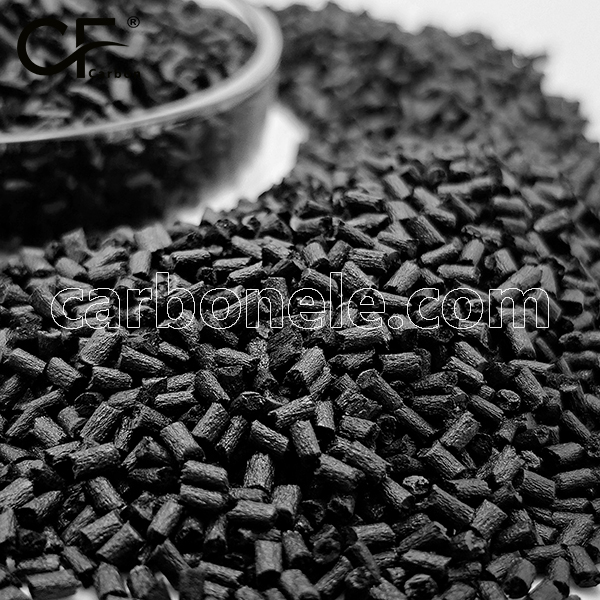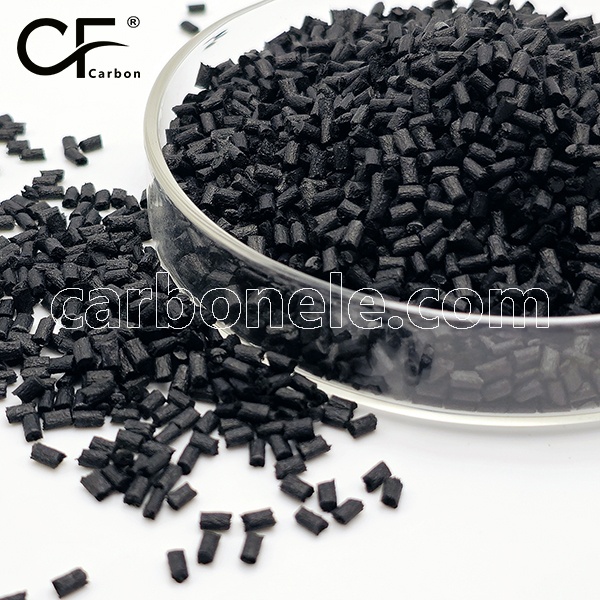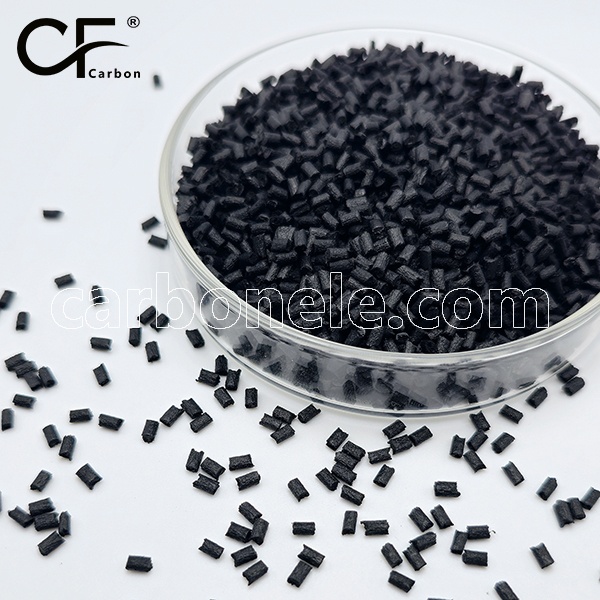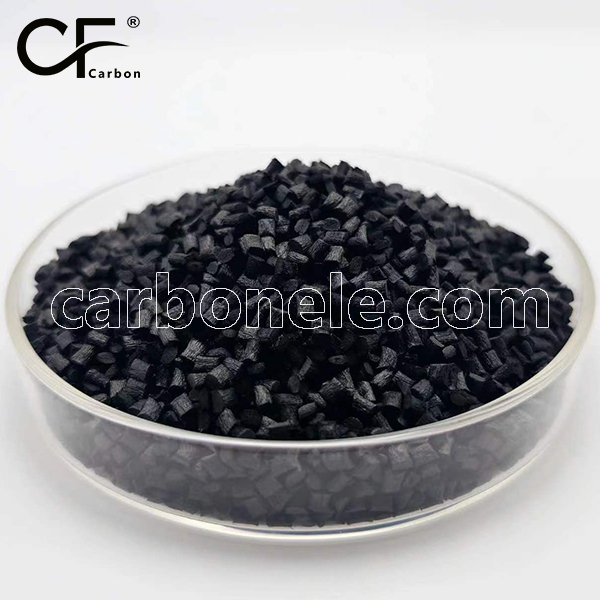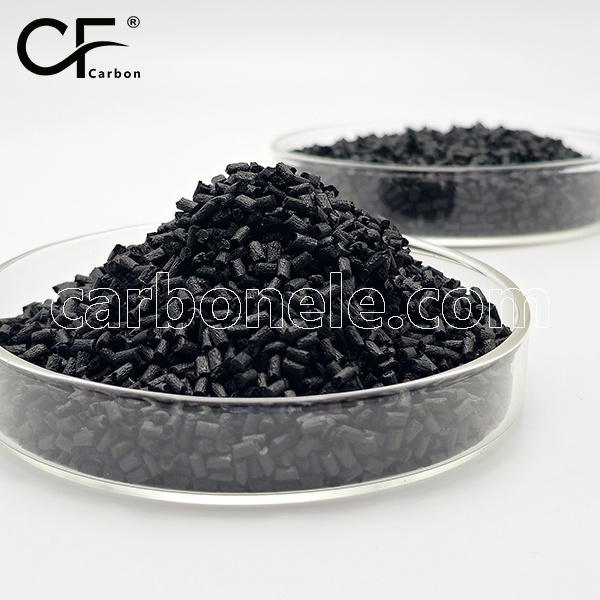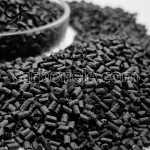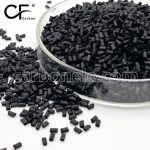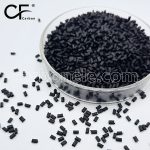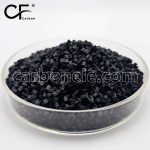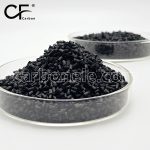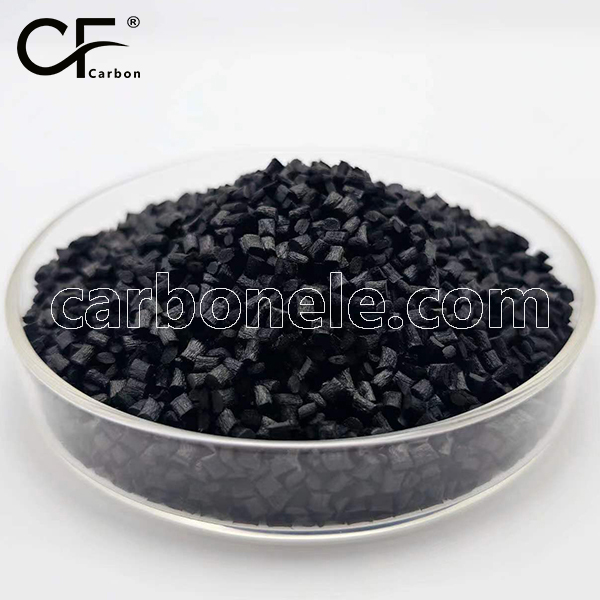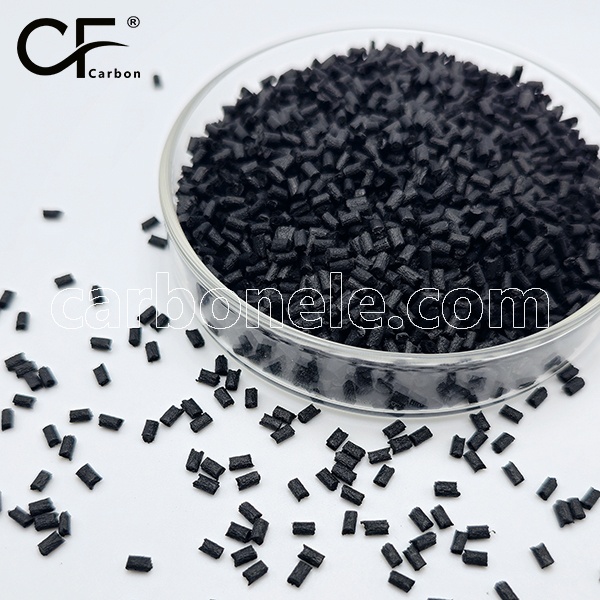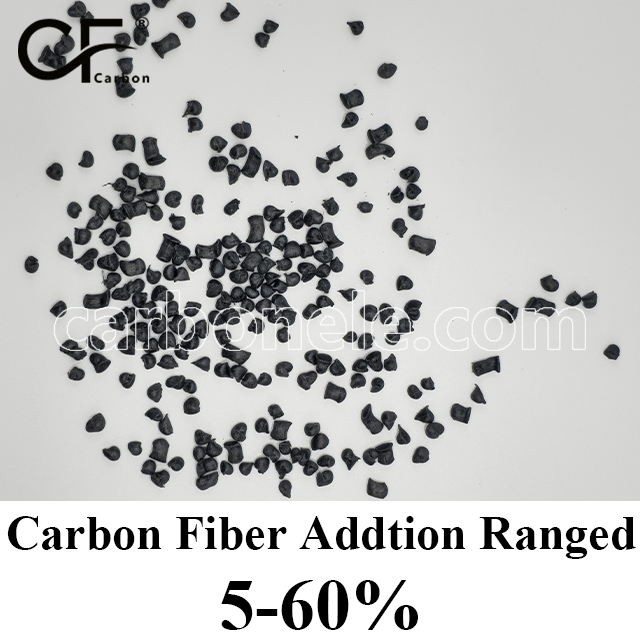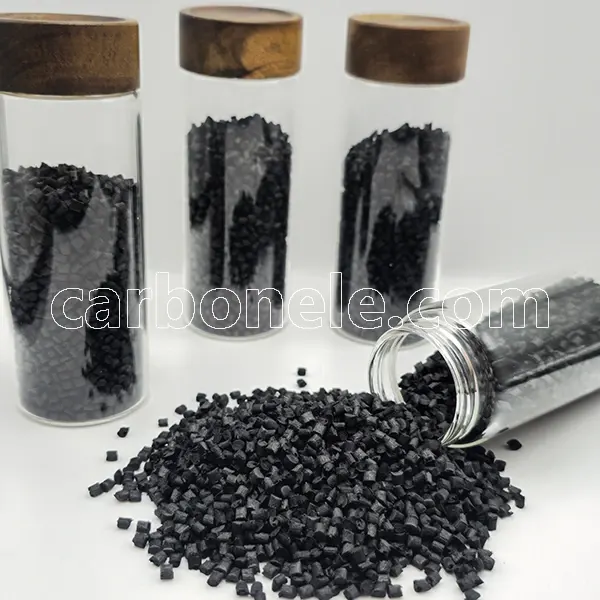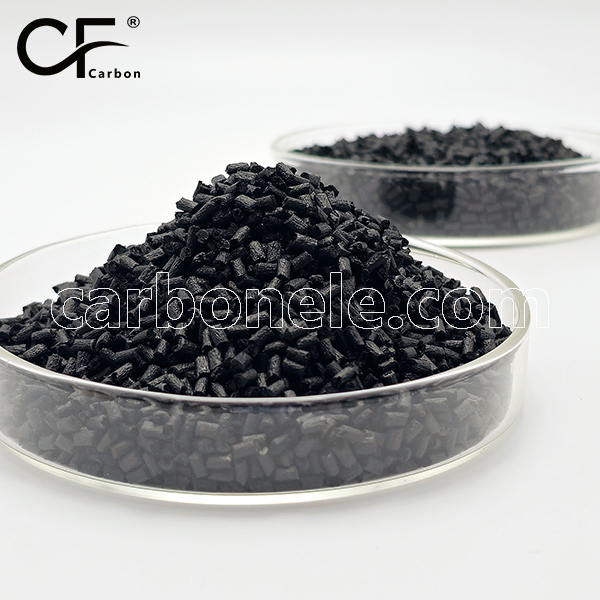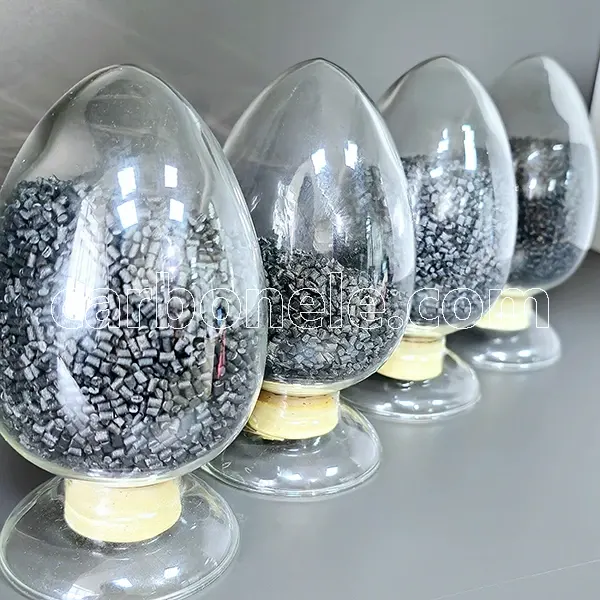The friction coefficient of MXD6-CF is lower than that of unreinforced MXD6 due to the presence of carbon fiber, which enhances wear resistance and reduces surface friction. While pure MXD6 already offers good mechanical properties and moderate friction characteristics, the addition of carbon fiber in MXD6-CF significantly improves its tribological performance, making it more suitable for high-wear applications. This reduction in friction helps minimize material degradation, lower energy loss, and extend the lifespan of components in demanding environments.

MXD6-CF50 High-Strength Components for 300°C Work
MXD6-CF50 offers high-strength, heat-resistant performance for components in extreme 300°C environments. Ideal for conveyors, aerospace, and automotive use.
- Model number: MXD6-CF-BCA5
- Matrix Resin: Meta Xylylene Diamine Polyamide 6 (MXD6)
- Reinforcing Filler: Carbon fiber
- Appearance: Granules
- Grade: Injection/extrusion grade
- Packaging: 25kgs/bag
MXD6-CF50 High-Strength Components for 300°C Work
In extreme temperature and demanding conditions, the stability and durability of materials determine the lifespan and performance of equipment. MXD6-CF50, a high-strength carbon fiber reinforced poly-m-xylylene adipamide material, excels in heat resistance, mechanical strength, and dimensional stability. It can withstand harsh industrial environments while offering engineers greater freedom for structural optimization.
Material Characteristics of MXD6-CF50
MXD6-CF50 is made from high-performance MXD6 resin reinforced with carbon fiber, delivering significant improvements in mechanical strength and thermal resistance. It is suitable for industrial equipment that must operate continuously under high temperatures, maintaining stable physical properties.
-
High Strength: Carbon fiber reinforcement gives the material excellent load-bearing capability for heavy-duty applications.
-
Heat Resistance: Resists softening or deformation under elevated temperatures, maintaining structural stability.
-
Low Thermal Expansion: Keeps dimensional accuracy even under frequent temperature fluctuations.
Application Example – High-Temperature Conveyor Equipment
In high-temperature production lines, such as metal heat treatment or glass forming workshops, conveyor systems must operate for extended periods near their thermal limits. An industrial manufacturer chose MXD6-CF50 for its conveyor chain connectors.
Enhanced Reliability
The MXD6-CF50 chain links retain high rigidity under heat, preventing loosening from thermal stress and reducing the risk of production downtime.
Reduced Maintenance Frequency
Traditional metal parts are prone to oxidation or fatigue at high temperatures, while MXD6-CF50 resists oxidation and corrosion, significantly extending maintenance cycles.
Lower Overall Weight
Compared to metal components, MXD6-CF50 is lighter, reducing the load on the drive system and improving energy efficiency.
Multi-Industry Potential of MXD6-CF50
While this case focuses on high-temperature conveyor systems, the advantages of MXD6-CF50 make it competitive in many other industries.
Industrial Machinery
Ideal for high-load, wear-resistant parts such as high-temperature jigs, gears, and bearing housings.
Aerospace
In high-temperature flight conditions, MXD6-CF50 maintains both light weight and structural integrity, reducing energy consumption.
Automotive Manufacturing
Perfect for engine bay components where both heat resistance and structural strength are essential.
Why Choose MXD6-CF50
Under extreme conditions, material selection is a key factor for system reliability. Engineers choose MXD6-CF50 because it:
-
Extends service life and reduces downtime risks
-
Delivers excellent structural strength for heavy load and high-stress conditions
-
Maintains stable dimensions and performance at high temperatures
-
Offers flexible processing for complex parts
Future Outlook
As industrial production moves toward greater efficiency and durability, the applications of MXD6-CF50 will continue to expand. From high-temperature conveyor systems to aerospace and precision manufacturing, MXD6-CF50 is poised to become a preferred material for critical components. It represents a new benchmark for high-performance engineering plastics, bringing more possibilities to design and manufacturing.
If you want to get more information about MXD6-CF60, you can visit our YouTube.
Strength between MXD6 and MXD6-CF
MXD6 offers a balanced combination of mechanical performance, dimensional stability, and processability, with higher tensile and flexural strength compared to standard engineering thermoplastics. Its low moisture absorption enhances stability in varying environments, while carbon fiber-reinforced variants provide even greater stiffness and wear resistance. MXD6 serves as a versatile material, ideal for applications requiring high strength and durability without excessive rigidity.
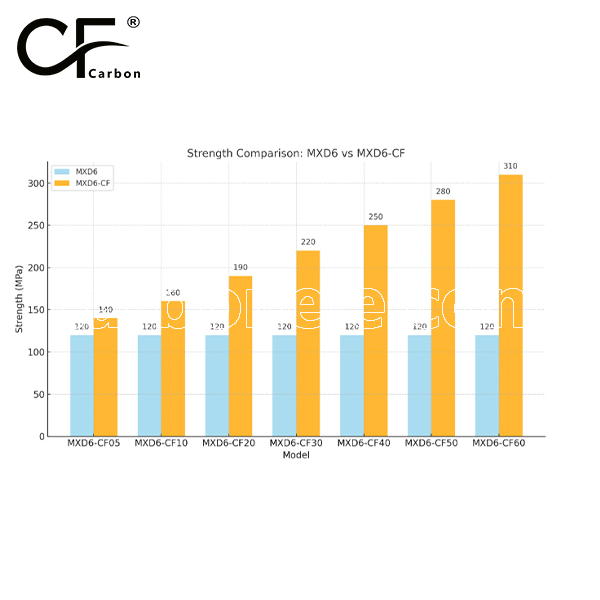
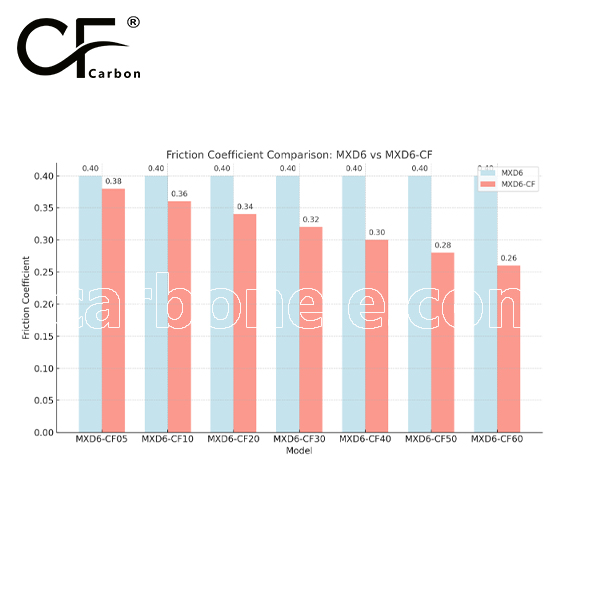

Frequently Asked Questions
Carbon (Xiamen) New Material Co., Ltd. aims to provide buyers with "one-stop" worry-free high-quality services. Here you can find all information about carbon fiber engineering plastics. If you still have questions, please send us an email for consultation!
-
How can I contact the manufacturer of a product that interests me?
When you find a product you are interested in, you can contact the manufacturer directly by sending an email and we will get back to you as soon as possible.
-
How do I find the products that interest me?
All you need to do is enter the keyword, product name in the search window and press the Enter key on your keyboard. Your search results page will then be displayed. You can also search within the product category pages on the home page. Each category is divided into subcategories, allowing you to refine your search and find products that interest you.
-
Where will I find a buying guide?
Please contact our after-sales service directly and we will provide you with a comprehensive operating guide.
-
What are CF Reinforced Thermoplastic Composites?
CF Reinforced Thermoplastic Composites are materials where carbon fibers are incorporated into a thermoplastic matrix. They combine the strength and stiffness of carbon fibers with the processability and recyclability of thermoplastics. For instance, they are used in automotive parts like bumper beams.
-
What are the benefits of CF Reinforced Thermoplastic Composites over traditional composites?
The key benefits include faster production cycles, easier recyclability, and better impact resistance. They also offer design flexibility. An example is in the manufacturing of consumer electronics casings where complex shapes can be achieved more easily.
-
How are CF Reinforced Thermoplastic Composites processed?
Common processing methods include injection molding, extrusion, and compression molding. Injection molding is widely used for mass production. For example, in the production of small components for the medical industry.
-
What industries use CF Reinforced Thermoplastic Composites?
They are utilized in aerospace, automotive, medical, and sports equipment industries. In aerospace, they can be found in interior components. In the medical field, they might be used in prosthetics.
-
How does the carbon fiber content affect the properties of the composites?
Higher carbon fiber content generally leads to increased strength and stiffness but may reduce ductility. A moderate content is often balanced for specific applications. For example, a higher content might be preferred in structural parts of a race car.
-
What are the challenges in using CF Reinforced Thermoplastic Composites?
Challenges include higher material costs, complex processing equipment requirements, and ensuring uniform fiber dispersion. Issues with adhesion between the fibers and the matrix can also arise. An example is in achieving consistent quality in large-scale production.







